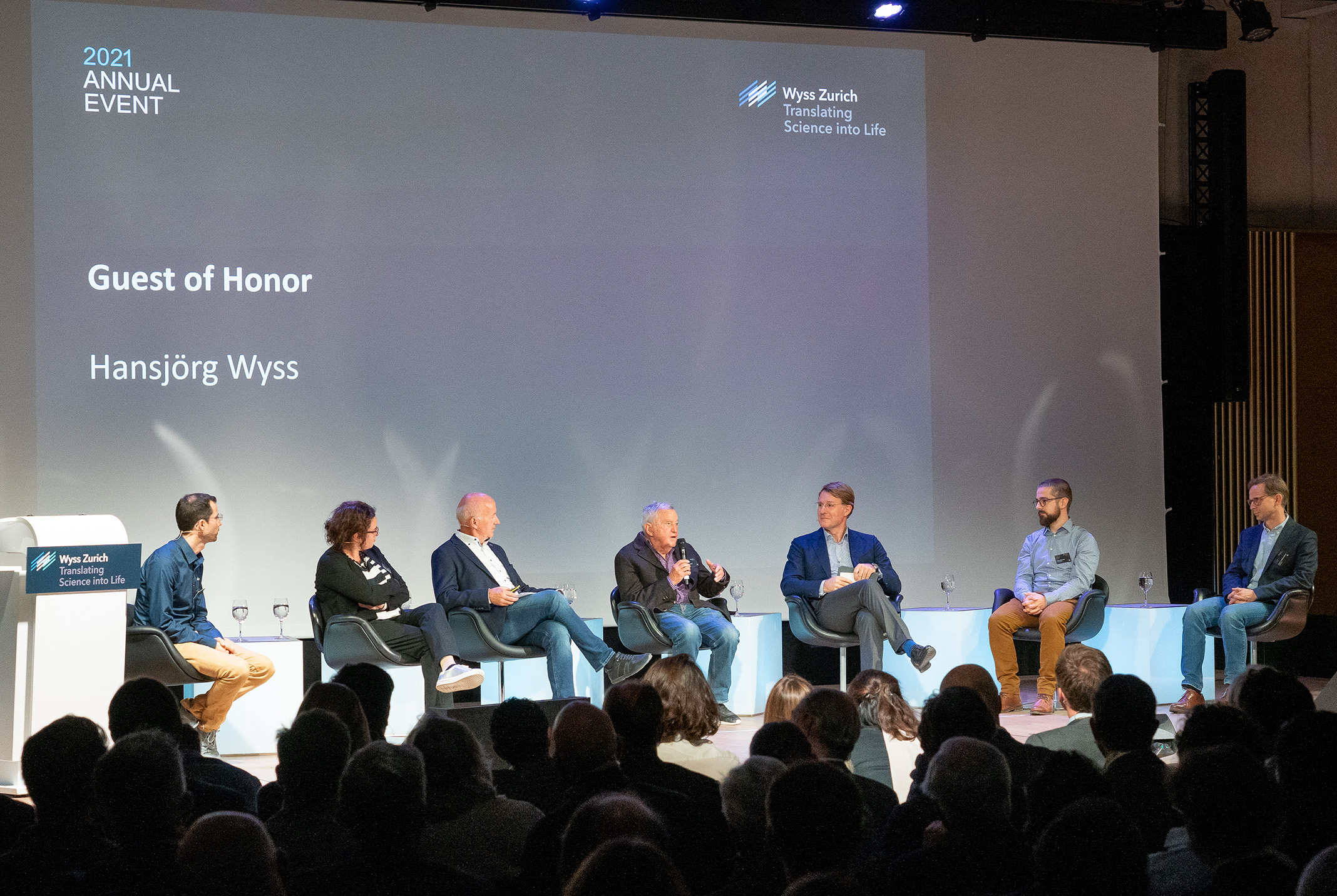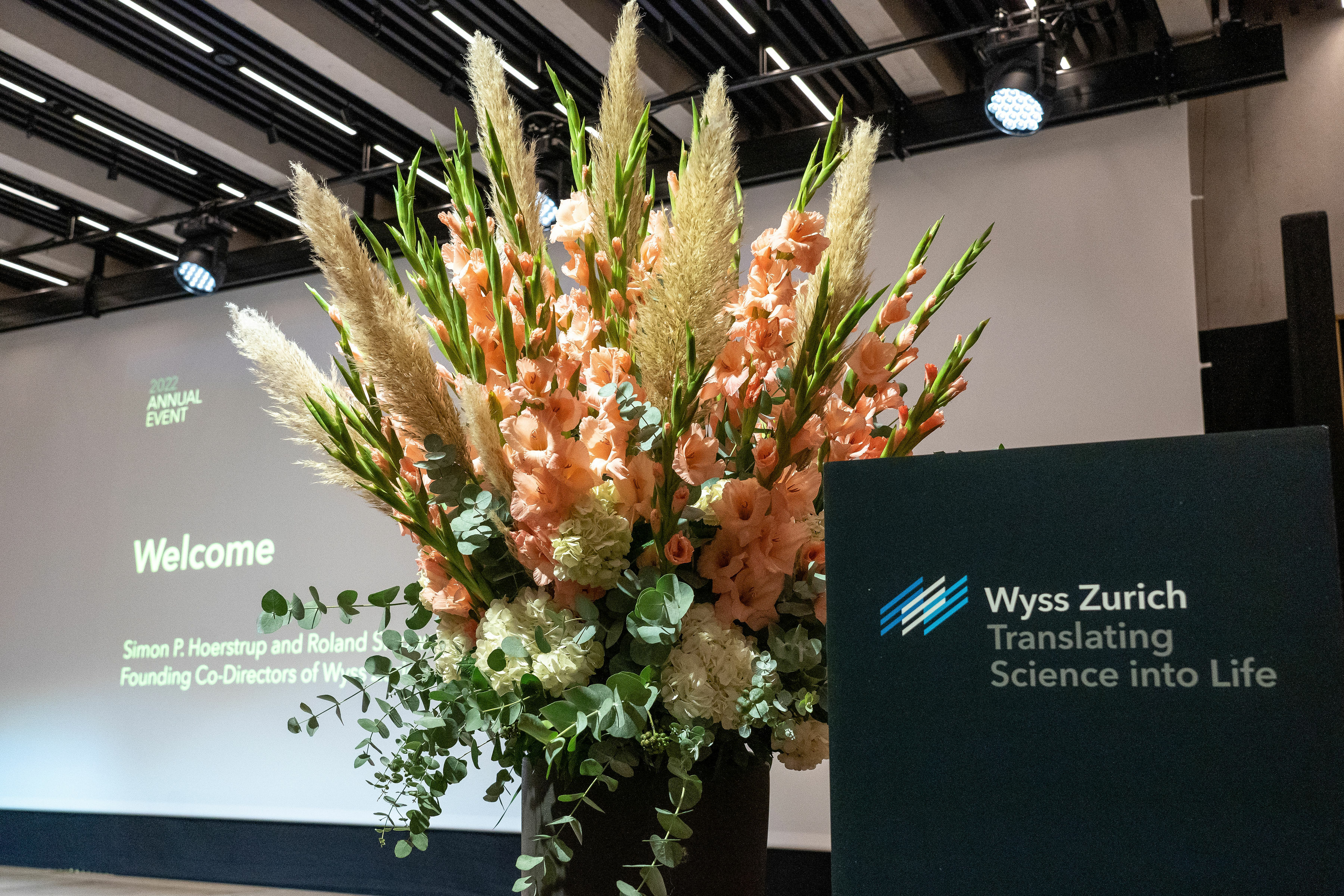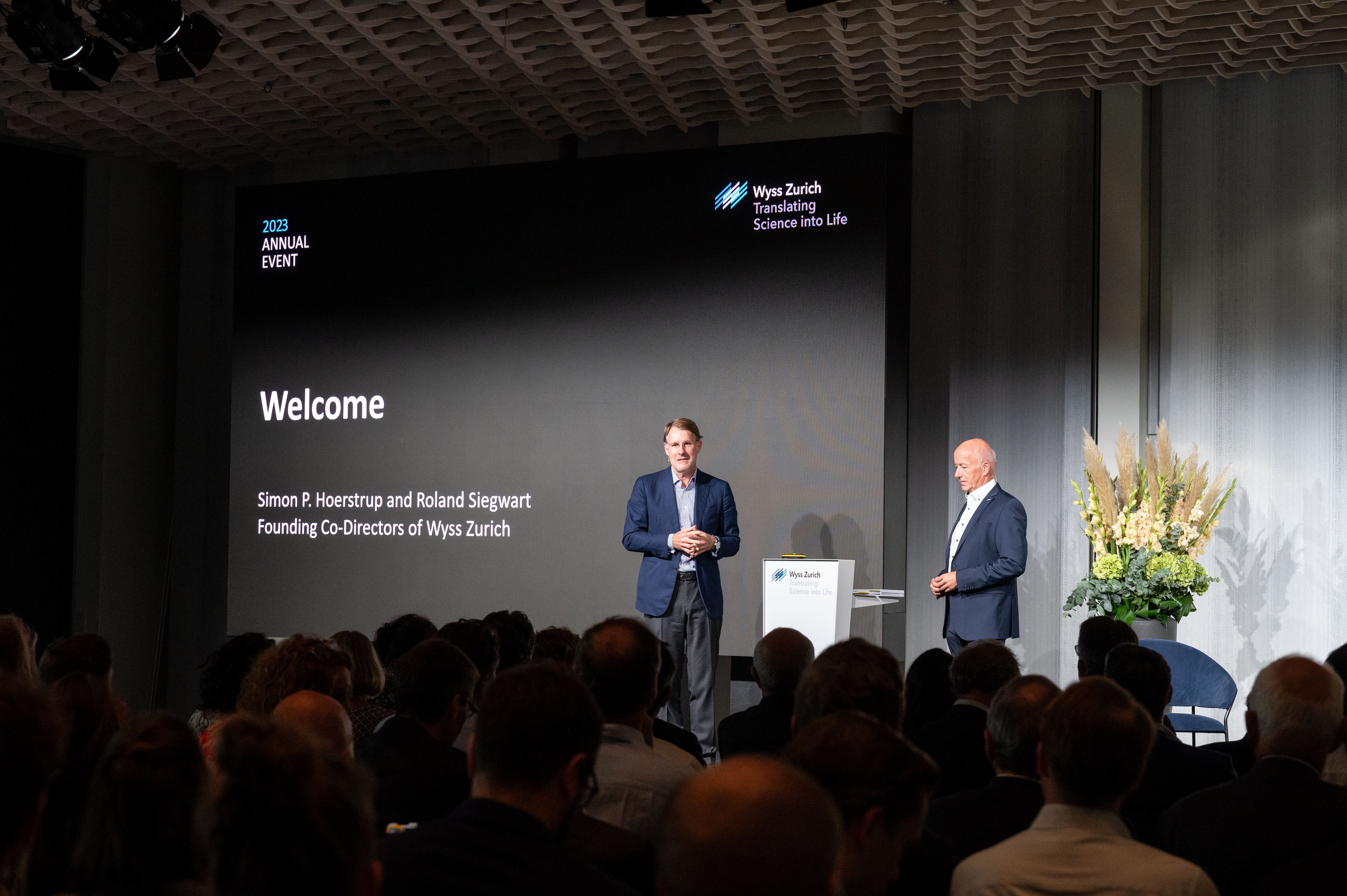Wyss Zurich Annual Event 2019
03-10-2019 – The fifth Wyss Zurich Annual Event, held on October 3, 2019, was quickly booked to capacity. The 300 guests from the academic, policy and business sectors enjoyed a fascinating journey through the first years of operations, learning about the various projects all committed to the Wyss Zurich mission “Translating Science into Life”.
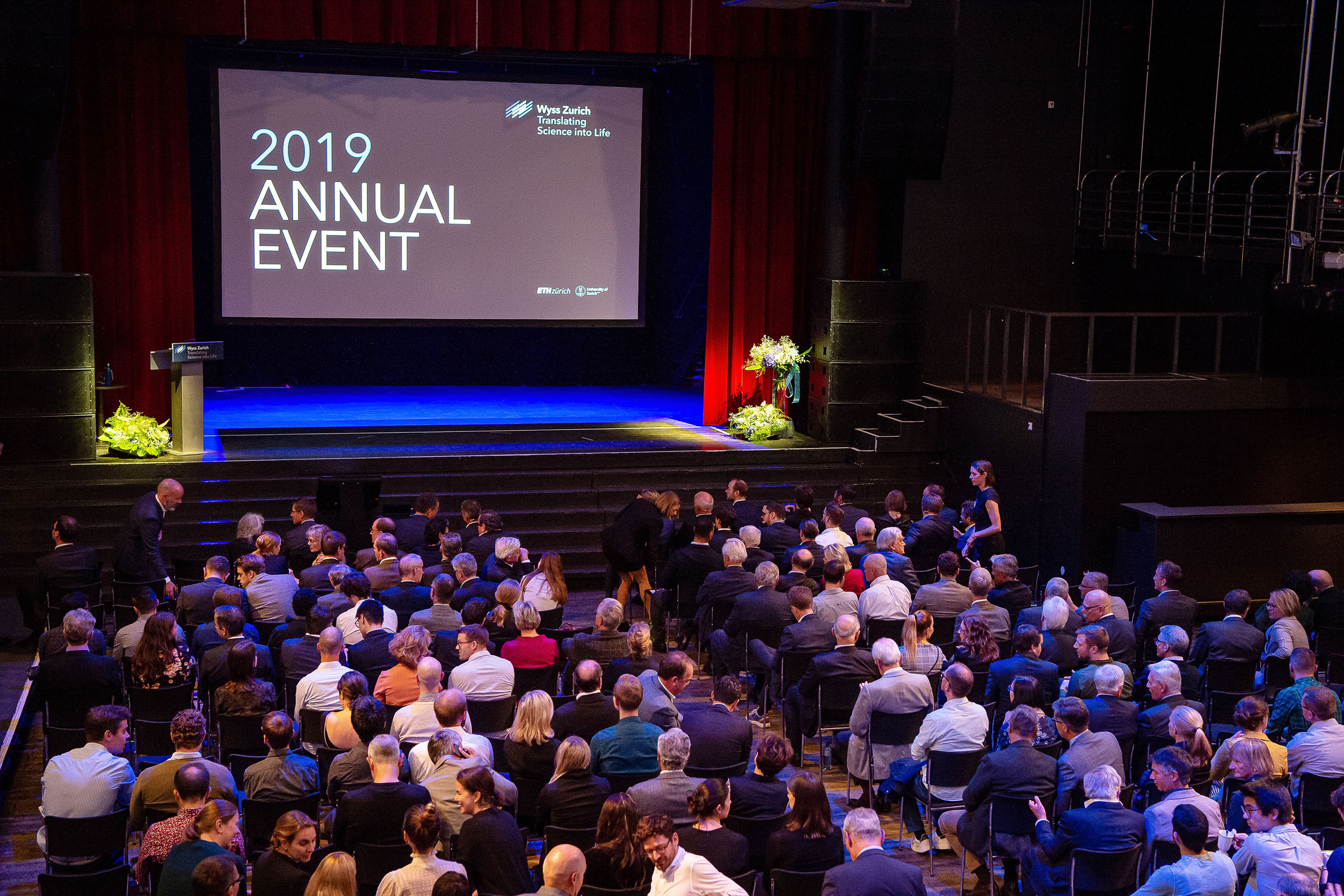
Wyss Zurich was set up as an accelerator for new clinical therapies and robotic technologies and is jointly operated by ETH Zurich and the University of Zurich. The initiator of Wyss Zurich and guest of honor, Hansjörg Wyss, as well as the Founding Co-Directors, and the representatives of the universities were very happy with the progress of Wyss Zurich, which so far has been a great success.
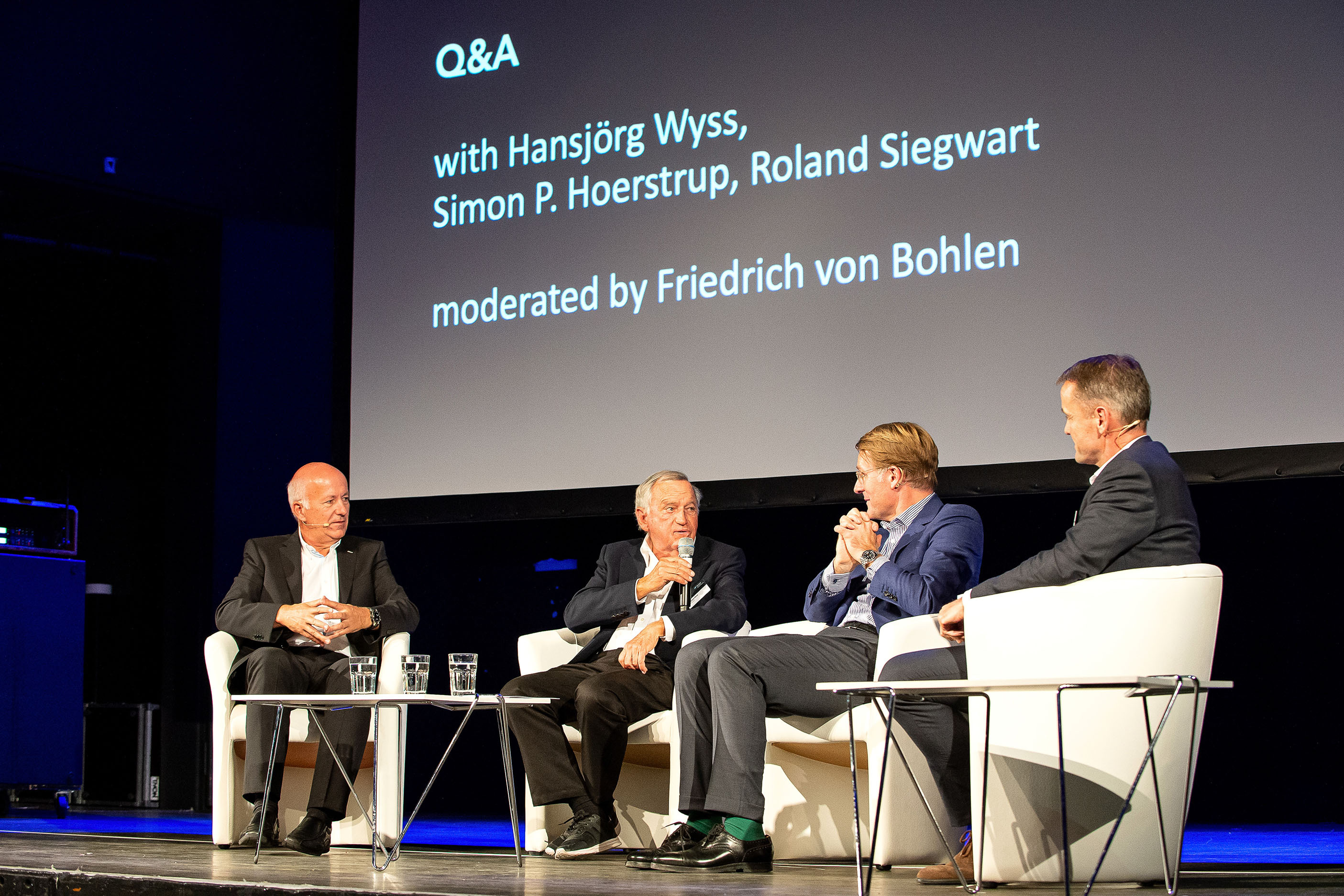
This year’s Wyss Zurich Annual Event focused on the many things that make the startup accelerator Wyss Zurich what it is today. The official part of the program highlighted the true stars of this initiative, which is operated jointly by ETH and the University of Zurich: the Wyss Zurich projects. The event was quickly booked to capacity. Hosted by the Founding Co-Directors, 300 guests from the academic, political and business communities embarked on a journey through the first years of operations as they learned more about Wyss Zurich model.
Following a few brief words of welcome from Founding Co-Directors Simon P. Hoerstrup and Roland Siegwart, the audience began its journey through time, looking at Wyss Zurich from its inception to the present day. In lively, engaging presentations, the Founding Co-Directors introduced every one of Wyss Zurich’s groundbreaking projects – ranging from the very first project building living heart valves for babies, to the youngest, Voliro, autonomous aerial robots with the capability to see and touch. The program was closed with a panel discussion, moderated by Friedrich von Bohlen, with the three people without whom Wyss Zurich would never have become a reality: Wyss Zurich initiator and donor Hansjörg Wyss, the guest of honor, and Founding Co-Directors Simon P. Hoerstrup and Roland Siegwart. Together they reviewed the first five years of Wyss Zurich and took stock of where it is today. Wyss Zurich, which is operated jointly by Zurich’s two outstanding universities, ETH Zurich and the University of Zurich, was created with the goal of “Translating Science into Life” in the two emerging fields of Regenerative Medicine and Robotics. The aim was to enrich the excellent academic Zurich ecosystem by a strong hub for clinical translation and technology transfer.
“I saw a real opportunity”
Asked about his original vision and expectations, Hansjörg Wyss responded, “I didn’t have any expectations at all. What happened was this: For two years, Roland had been telling me that I finally had to do something for ETH. Then I met Simon, who told me he was in a difficult position. He had completed his research on creating artificial blood vessels for babies and infants. However, there were no university funding sources to cover the cost of clinical trials. So, I saw an opportunity, a real opportunity for two universities that are complementary, and located only a hundred meters apart, to finally work together. That was the story.”
Following up on scientists’ good ideas is often impossible. Even when some of those ideas find their way into the business world, it is by no means certain that they will survive. The high complexity of technologies developed at the universities often creates a mismatch of expectations between inventors and investors, regarding timelines and financial requirements, leading to failure of the projects – the so-called “Valley of Death”.
This is where Wyss Zurich starts: Scientists benefit from high-quality translational technology platforms, substantial financial support – in particular for clinical trials – and the advice of experienced experts who are very familiar with the industrial world. These ideas and projects leave Wyss Zurich stronger than before, are ready to make a substantial contribution to humankind, and ideally, are able to succeed in a free market economy.
The universities are grateful
Joël Mesot, President of ETH, and Michael E. Schaepman, Vice President Research at the University of Zurich, expressed their gratitude for Hansjörg Wyss’s initiative. They value the closer cooperation that Wyss Zurich has made possible. “Wyss Zurich has managed to bring two universities closer together. Thanks to Wyss Zurich, they are talking to each other and working together.”
Wyss Zurich is currently supporting 12 full projects, 3 Associate projects and 1 Outreach project. Most of them are today working together with both, the Regenerative Medicine and Robotics Technology Platform.
Positive results
All the involved stakeholders were very positive in their comments and pointed out the need for more institutions and models of this kind in academia. The two Founding Co-Directors underscored how valuable it is to bring together the fields of Regenerative Medicine and Robotics. Hansjörg Wyss, too, was clearly pleased with the evolution of Wyss Zurich. The highly motivated Project Managers were enormously grateful for the support they have received.
After nearly five years of operation, Wyss Zurich can already look back on some initial successes. Some of the robotic projects, for example, Wingtra and Anymotion, have successfully left Wyss Zurich, employ over 100 people and sell their products all over the world. Six clinical trials have been initiated among the medical projects. Furthermore, ETIMSred, denovoSkin and CeNeReg have already reached clinical phase II. Overall, the broad Wyss Zurich project portfolio is nicely balanced between different risk levels, financial and time requirements, and return potential.
Asked about the future, Hansjörg Wyss was optimistic, yet realistic. Quoting a famous baseball player, he pointed out that “the future is not what it used to be.”


